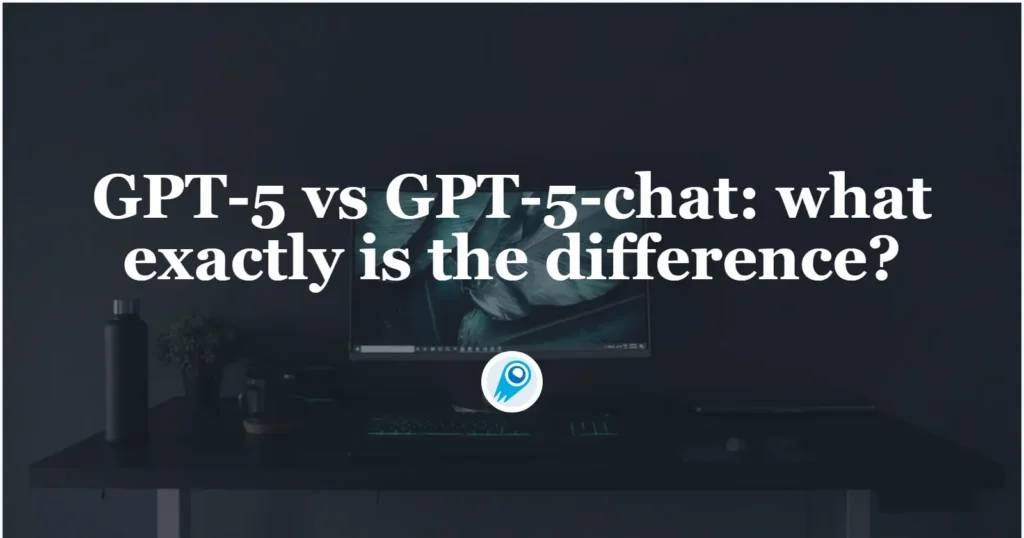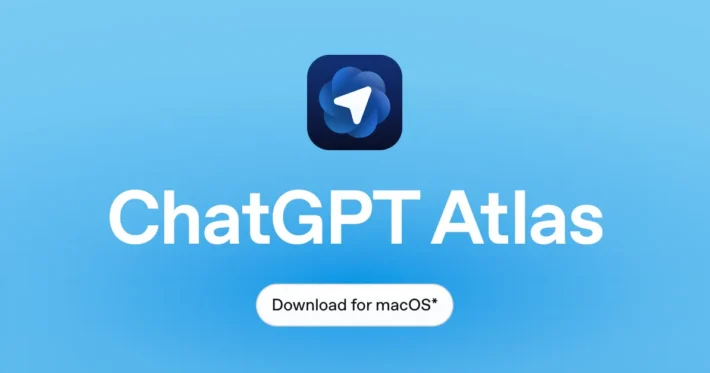GPT-5 vs GPT-5-chat: what exactly is the difference?

GPT-5 is a family and a unified reasoning system that OpenAI ships in multiple variants for different workloads; gpt-5-chat (often seen as gpt-5-chat-latest) is the chat-tuned, non-reasoning variant that powers quick conversational responses in ChatGPT and is exposed to developers as a distinct API model. They share architecture and training lineage, but they are tuned, routed, and offered differently — which leads to meaningful differences in latency, behavior, tool access, and suitability for complex reasoning tasks.
What is GPT-5 — in plain terms?
GPT-5 as a unified system
OpenAI’s public rollout describes GPT-5 not as a single monolithic model but as a system of models with a runtime router that chooses the right internal component depending on task complexity and intent. In other words, “GPT-5” is the name for the new generation and for a family that includes high-reasoning variants and lighter variants optimized for speed and cost. That unified design is a key architectural change versus earlier releases where you explicitly picked one model.
Why OpenAI built it this way
The motivation is pragmatic: different tasks (simple Q&A, long-form planning, code generation, multimodal inputs) benefit from different compute/reasoning tradeoffs. A single runtime that can route between a fast, low-latency “default” brain and a deeper “thinking” brain improves user experience and lets OpenAI manage safety/performance centrally while exposing more focused variants to developers. This is the reason you now see options like Fast, Thinking, and Pro inside ChatGPT’s model picker.
What is “gpt-5-chat” (or GPT-5-Chat-Latest)?
The chat-tuned variant explained
gpt-5-chat-latest (commonly called gpt-5-chat) is the non-reasoning, conversation-optimized variant that OpenAI uses for the instant conversational experience in ChatGPT. It’s tuned to prioritize conversational tone, immediate helpfulness, and faster replies. As an API model, it’s a separate endpoint with its own supported parameters and limits. OpenAI explicitly documents that the non-reasoning model used in ChatGPT is available to developers as gpt-5-chat-latest.
What “non-reasoning” actually means
“Non-reasoning” doesn’t mean the model is dumb — it still makes inferences and follows instructions — but it means this variant is not configured to run long, resource-heavy chain-of-thought style internal reasoning routines by default. That tradeoff reduces response latency and cost while keeping conversational qualities (tone, safety filters, and immediate usefulness) prioritized. If you need deeper stepwise reasoning, OpenAI exposes other GPT-5 variants (e.g., the reasoning model, GPT-5 Thinking, or GPT-5 Pro) intended for that work.
How are the two different in behavior and tuning?
Conversational style vs. analytical depth
- gpt-5-chat: Tuned for clarity, brevity, friendliness, and consistent chat behavior. It produces responses that “feel” like human conversation and is optimized to avoid wandering, overlong chains of internal thought. This makes it the best default for chatbots, virtual assistants, and UI-driven conversational flows.
- gpt-5 (reasoning variants): Tuned for stepwise thinking, extended planning, coding, and tool orchestration. When you need rigorous multi-step problem solving, constraint satisfaction, or complex agentic behavior, these variants are more appropriate.
Latency and cost differences
Because gpt-5-chat is optimized for speed, you will generally see lower latency and lower per-token cost for typical conversational requests compared with the full reasoning variants. Conversely, the high-reasoning or Pro variants are heavier (more compute), costlier, and take longer per prompt — but they can handle demanding, multi-turn planning tasks more reliably. OpenAI and ecosystem benchmarks report precisely this tradeoff in practice.
Safety posture and hallucination behavior
The chat variant is tuned with tighter conversational safety heuristics to reduce some classes of harmful or risky outputs and to keep tone consistent. The reasoning variants explicitly prioritize admitting uncertainty and following chains of thought (which can improve factual accuracy on complex tasks) — but that also exposes different failure modes. In short: different tuning produces different safety/clarity tradeoffs.
Prompting and context handling
Both forms aim to work with long context windows, but the chat interface typically enforces conversational history and tools designed for message-style context management (message arrays, metadata like tool calls, and richer turn-by-turn state). In API usage, the chat endpoint (/chat/completions or responses with a chat model) expects and returns messages — whereas a raw text/completion endpoint (if exposed) may accept different prompt formats. Practically, that means developers interact differently with each.
How does OpenAI present them in ChatGPT and the API?
In ChatGPT (product view)
In the ChatGPT UI, “GPT-5” is surfaced as a selectable model family, but the system will often auto-route between a fast chat mode and Thinking/Pro modes. Users can also explicitly select Fast, Thinking, or Pro. A “Get a quick answer” toggle allows switching back to the chat-style immediate reply when the system is performing deeper reasoning. This is a product UX built on the internal router.
Which mode corresponds to GPT-5 vs GPT-5-chat?
- “Fast”: Typically uses chat-oriented serving parameters (lower beam depth, more aggressive sampling temperature) and is most like GPT-5-chat’s default behavior in consumer apps.
- “Thinking”: Engages internal chain-of-thought mechanisms, more compute, and longer deliberative passes — behavior associated with the GPT-5 “reasoning” variant.
- “Pro”: A higher-capacity operating point that may use the strongest model settings and additional tool access (and is often the choice for research/enterprise tasks).
These modes are not separate models in the sense of dThese modes are not separate models in the sense of different weights — they are different inference pipelines and tuning, which is why OpenAI can present them as toggles within the ChatGPT experience.
In the API (developer view)
OpenAI publishes separate API model names for developers:
gpt-5(the main reasoning model intended for high-performance tasks),gpt-5-mini/gpt-5-nano(lighter, lower-cost variants),gpt-5-chat-latest(the chat-tuned model used in ChatGPT).
OpenAI’s developer docs explicitly note that the non-reasoning model used in ChatGPT is available as gpt-5-chat-latest, and that the API’s gpt-5 variant represents the reasoning model that powers maximum performance. That separation is intentional: product users get the seamless routed experience while developers choose the variant that matches their goals.
Technical differences: what’s different under the hood?
Router + multi-model runtime vs. single endpoint behavior
GPT-5 uses a runtime router that selects an internal path: for many routine prompts, the router will pick a low-latency chat path; for complex prompts it will route to deeper reasoning modules. gpt-5-chat-latest corresponds to the chat path of that system, but when you call gpt-5 in the API you reach a reasoning-first variant that supports longer internal deliberation. This architectural choice — dynamic routing — is one of the largest shifts from prior model families.
Supported features and parameters
GPT-5-chat differs from a raw GPT-5 call because the chat deployment wraps the model with conversation semantics: messages are structured as system, user, and assistant entries. There are practical differences in supported API parameters and features. Community reports and platform docs indicate gpt-5-chat-latest supports certain chat-style parameters (temperature, system/user messages, etc.) and is the model that supports the instantaneous conversational UX. Some reasoning/pro variants expose other capabilities (extended context windows, structured outputs, and agentic tool chains). Check the model pages for exact parameter support because OpenAI documents small but important differences there.
Context window and memory
OpenAI has increased context limits across the GPT-5 family (supporting up to 272,000 input tokens and up to 128,000 reasoning & output tokens, giving a theoretical combined context budget around 400,000 tokens). However, the way memory and state are managed differs by product: ChatGPT layers product memory and Personas on top of the chat variant, whereas the API gives you raw context control and the ability to stream longer documents into the reasoning variant. If you need long-horizon, stateful workflows tied to external tools, the reasoning variants are the natural match.
What about multimodality and vision + code capabilities?
Is multimodality different across the variants?
OpenAI’s GPT-5 release emphasized multimodal capability improvements (vision, code understanding, longer context for mixed media). Both chat and non-chat variants can accept multimodal payloads in supported configurations, but the chat variant is tuned to produce conversational, multimodal responses (captioning, step instructions) while the base variant may be better when you need richer structured outputs (detailed code patches, exhaustive analysis across images and docs).
Coding and debugging
OpenAI specifically highlighted GPT-5’s strength as a coding collaborator — creating, debugging, and reasoning about large repositories and front-end code. If your product is a developer tool (IDE assistant, code-review pipeline), you may find that invoking the more deliberative GPT-5 variant (or using the “thinking” mode) yields higher-quality, more correct patches; when building in-chat coding helpers or quick code snippets, gpt-5-chat provides faster and more user-friendly interactions.
Tooling and function calling
Chat deployments emphasize tooling primitives — structured function calls (tool calling), retrieval augmentation, and safer default behaviors — because these patterns map naturally to conversational agents and assistants. The chat API includes richer examples for using function calling, handling multi-turn state, and integrating retrieval plugins. For classical completion-style workloads (single-shot generation), developers may still use the underlying model endpoint when exposed, but the chat API is the recommended path for interactive flows.
How do their intended use cases differ?
Which tasks is GPT-5 optimized for?
GPT-5 (the non-chat or “thinking” oriented variant) is positioned by OpenAI as the strongest model for deep reasoning, coding, complex multi-step tasks, and creative composition where the model is expected to “think” through a chain of reasoning before returning a final answer. The marketing and technical materials emphasize improved debugging, end-to-end code generation, and higher accuracy on demanding benchmarks. This variant is the natural choice when an application needs maximal fidelity, fewer reasoning errors, and deterministic control over intermediate reasoning outputs.
Which tasks is GPT-5-chat optimized for?
GPT-5-chat is tuned for fluid, context-rich conversation: turn-taking, following system instructions, multi-message context handling, and safe responses in interactive settings. It’s the deployed form commonly used in ChatGPT apps and chat API endpoints where instant, user-facing replies and integrations with tools (e.g., web browsing, code execution, plugins) are prioritized. The chat variant often trades off some of the model’s internal deliberative visibility for responsiveness and UX affordances (e.g., streaming tokens, partial answers).
Which one should you pick for your project: practical guidance
If you build user-facing chat experiences
Choose gpt-5-chat when you need:
- Instant, streaming conversational replies.
- Tight integration with plugins/tools and file uploads.
- Conservative safety defaults out of the box.
- The best UX for multi-turn chatbots, help desks, or assistant features.
If you build backend pipelines, research tools, or heavyweight reasoning flows
Choose GPT-5 (the reasoning-oriented variant) when you need:
- Deterministic, chain-of-thought visibility or higher reasoning fidelity.
- Large single-shot analyses over long contexts (big codebases, large research documents).
- Fine control over decoding and intermediate state for auditability or bespoke safety tooling.
Hybrid approaches
Many robust architectures combine both: route immediate user messages to gpt-5-chat for snappy responses, and when complex analysis is required, trigger a backend GPT-5 job that returns an audited, richly reasoned output. Microsoft’s “smart mode” examples show model routing in practice — use the chat model for quick context and the reasoning model for deep dives.
Getting Started
CometAPI is a unified API platform that aggregates over 500 AI models from leading providers—such as OpenAI’s GPT series, Google’s Gemini, Anthropic’s Claude, Midjourney, Suno, and more—into a single, developer-friendly interface. By offering consistent authentication, request formatting, and response handling, CometAPI dramatically simplifies the integration of AI capabilities into your applications. Whether you’re building chatbots, image generators, music composers, or data‐driven analytics pipelines, CometAPI lets you iterate faster, control costs, and remain vendor-agnostic—all while tapping into the latest breakthroughs across the AI ecosystem.
Developers can access GPT-5 API (include gpt-5, gpt-5-chat-latest ,refer to model ) etc through CometAPI,the latest model version is always updated with the official website. To begin, explore the model’s capabilities in the Playground and consult the API guide for detailed instructions. Before accessing, please make sure you have logged in to CometAPI and obtained the API key. CometAPI offer a price far lower than the official price to help you integrate.
Conclusion
GPT-5 and GPT-5-chat are siblings, not twins. They come from the same architectural evolution — the GPT-5 family and router-based runtime — but they are presented and tuned differently to satisfy different product and developer needs. gpt-5-chat-latest is the conversational, low-latency variant for chat experiences; gpt-5 and its Pro/Thinking siblings are the high-reasoning workhorses for complex tasks. Choose the chat model for conversational UX and immediate throughput; choose the reasoning variants when correctness, extended planning, and agentic tooling matter more than latency or cost.



